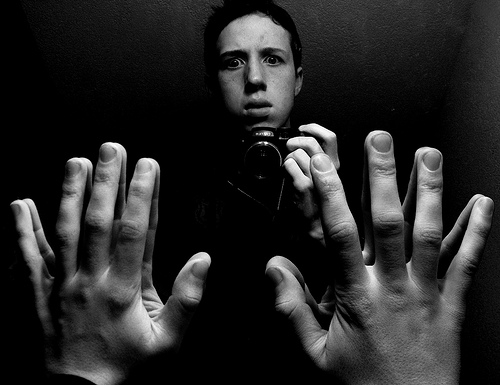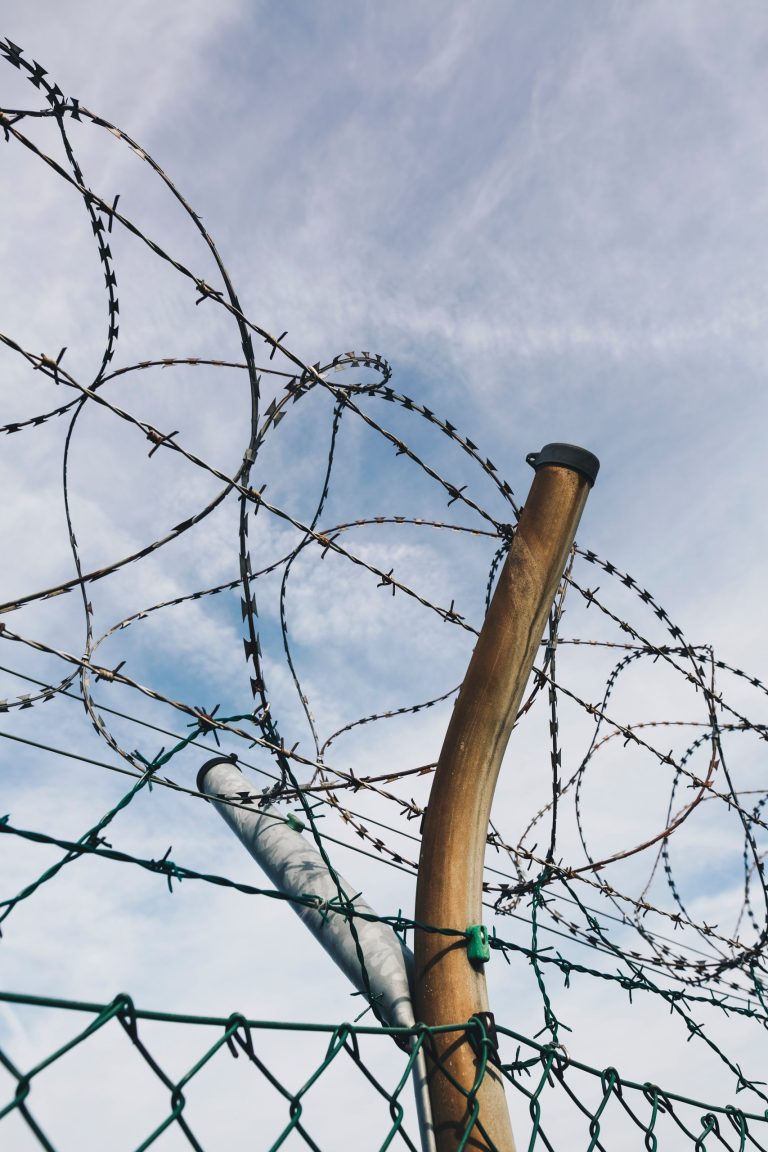A Look at Inner and Outer Conflict in Your Novel
We’re knee-deep in conflict (in our look at the four crucial corner pillars of novel construction). Let’s take some time to talk about the two faces of conflict: inner and outer. Maybe I don’t need to go over outer conflict because it’s obvious, right? Anything outside your character that hinders him or opposes him is external conflict. And usually this is easier to construct that internal conflict. But there are some things to keep in mind about external conflict.
I mentioned in an earlier post that you should have a central element of conflict in your story, but let me explain this a little further.
It’s possible you may have one individual or thing that is in direct opposition to your main character that is his greatest obstacle or challenge. It may be another person, an evil beast or demon, an element of nature (The Perfect Storm, for example), or a more abstract opponent, like society or law or “the system.” A lawyer trying to take a case to the Supreme Court can be fighting society and the legal system, and so instead of one person opposing him, conflict can come via many people and circumstances. The central conflict might encompass a number of elements, but it will still be “man against society,” unless this is a personal battle, such as in the 1970s movie Kramer vs. Kramer, which is more “man against man” (or woman).
So, to think in terms of a general, overarching central conflict element in your story, you need to go back to pillar #1: concept with a kicker. Your concept needs to be tied in with the central conflict of your story.
If your novel is about a married woman who desperately wants to have a baby and is willing to risk just about anything (high stakes) to get pregnant and have one, you need to determine just what the primary opposition is going to be for her. What is she willing to risk? What if her husband is sterile? What if she, he, or both do not want to adopt? What choices does she face and what would the consequences be by acting on them?
Always Ask Questions!
If you want this story to have great conflict with high stakes, your character might consider getting pregnant in secret, outside her marriage. Enter deception, lying, prevaricating, betrayal. What if she asks her best friend’s husband to impregnate her? Think of what a mess that could make—all because she wants a baby more than anything else. Would she kill? You could push her to that point. People have killed to hide their affairs (makes me think of Scott and Laci Peterson).
Without needing to point this out, we are talking here about a protagonist and her goal. Her core need. These are questions you can ask to help you elevate both private and public stakes:
- What will she do if that core need isn’t met?
- How far can you muddle, push, exacerbate the situation to raise the personal and public stakes?
- How many (more) people can you involve and affect by her choices?
- How many lives can you ruin (this is where you can come up with the great subplots for your secondary characters)?
- What allies can turn into foes by her choices and actions?
- How can you complicate things so that it (seemingly) becomes impossible for her to reach her goal? What will she do now that will make things even worse for herself and others?
- What core beliefs of hers can be challenged?
- Can you push her to have to choose between two options, both unthinkable (think Sophie’s Choice)?
Notice how the inner conflicts interweave with the outer ones. Every time your character struggles internally and has to make a hard choice, it creates consequences of outer conflict. And vice versa.
Donald Maass says, “Inner conflict is an interior war.” When your main character has two desires that are mutually exclusive, it’s a dilemma. This is not just inner confusion, though. Inner conflict has to present clear issues with clear repercussions. The choices your character makes have to be deliberate, done with knowledge of the stakes, risks, and consequences.
We haven’t gotten into theme yet, but whatever issues your story is showcasing by the plot, create conflict by having others take views that stand in opposition to your protagonist’s. Like plot layers, conflict can be thick or thin. Big and important or small and irritating. The best novels have conflict on many levels, all working cohesively to oppose your character. And as we’ll see later when we look at the pillar “plot in a string of scenes,” these forces build to a climax in which protagonist and conflict clash head-on.
Sometimes we writers really like our characters. We may even love them so much, we hate to make them uncomfortable or hurt them. Our jobs as novelists, however, require that we be a bit heartless. Okay, maybe more than a bit. For how can a hero triumph without conflict and high stakes? How interesting is that novel going to be if there is no obstacle in the way of his getting his heart’s desire?
From what I’ve seen in the hundreds of manuscripts I’ve worked on, conflict and stakes are way underplayed. Writers are too nice to their protagonists. Conflict is narrow, too small a scope. Asking these types of questions (above) can help push you to create higher stakes, bigger risks, greater possible losses, more collateral damage, and horrible choices.
Now that’s the recipe for a page-turner. Think of ways to create lots of internal conflict (hard choices) and external conflict (lots of opposition from every direction) and you’ll have a strong corner pillar. Any thoughts you’d like to share about inner and outer conflict? Which do you like best in a story?
Inspection checklists:
Inspection Checklist 1-concept with a kicker












Thanks for this! Going to use those questions on a wip of mine. I especially love it when a book’s external conflict is a mirror to internal.
Great post. Your explained inner conflict well and it has me rethinking my own character’s inner conflict. Thanks for sharing.
**Any thoughts you’d like to share about inner and outer conflict? Which do you like best in a story?**
I prefer more action in my stories (Urban Fantasy, Space Sci-Fi), so the conflict tends to outer.
However, in the paranormal romance stories that I read, the conflict tends to be more internal as the story turns more on the central characters relationship choices.
Interesting article… very eye-opening.
Sometimes with novels in that genre and others, the conflict starts with showing external circumstances, which sets up the premise. That makes a lot of sense. But then it narrows focus and hones in on the characters, and that introduces the inner conflict. With other novels, such as some women’s fiction for example, it starts internal and pulls back to involve the external. Genre and style have a lot to do with that.
Great stuff!!
This is great thanks! I’ve just taken great chunks out of one of my current projects because there was not enough of the above!
I feel novels need conflict on every page, every scene. James Bell says every scene should have a death in it: death of relationship, job, hope, fear, dream, etc. You’d be amazed how many novels I critique that have practically no conflict, no tension.
Hmmm…I don’t think I have any inner conflict yet. It’s all outer. I’ll have to think about this one. Thanks for the food for thought. 😉
This is definitely something I need to revisit. Often I have wonderful ideas of ways to make my characters suffer, but I fail to follow through and put them on the page.
I seem to have conflict riddled throughout my novel. The one area I’m struggle with is a five page scene, where a soon to be couple are shopping together. He is buying items that embarrass her, but other than that, she doesn’t mind… I do find I’m struggling to get conflict into this scene. There’s lots of teasing, fun, and even a few laugh out loud moments (I had a few people read to test that out without telling them I was looking for that). Every other page of my novel is full of conflict, deep conflict, lighter conflict, literally dark black hole conflict near the end… does it kill the book to have five pages that are lighter without real conflict? It’s about one quarter of the way into the book, and shows a lot of back and forth that helps learn some of the lighter sides to the second major character in a relaxed way, as usually he’s really serious. I want to make sure I do this right.
Sure, you want to have relief from all the tension, and having light moments or comic relief is very helpful. Even in my heavy relational dramas, I try to put in some funny or light moments, often with secondary characters. If it interests you, consider having me critique your scene or some chapters. You’ll get some constuctive feedback on what’s working and what’s not.